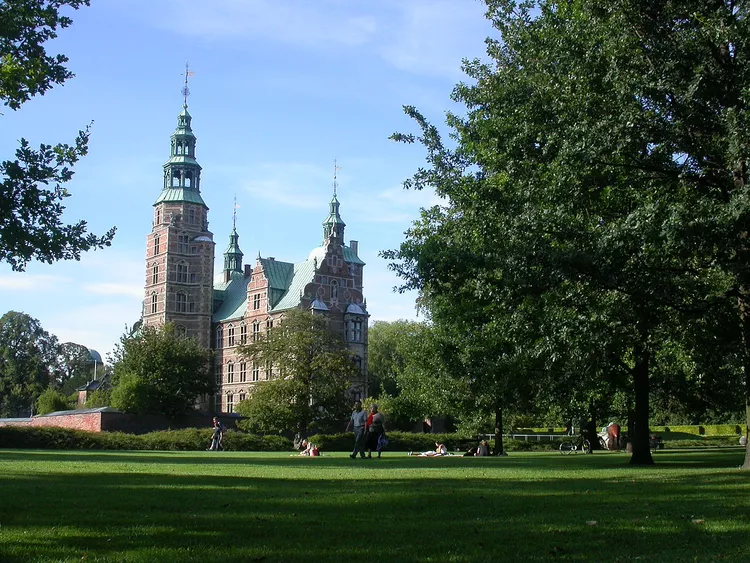These wonderful royal gardens in Denmark offer peace and quiet for everyone— not just kings and queens—allowing you to escape the busy city life of Copenhagen for a while. Here are the three most popular and beautiful gardens for travelers exploring Denmark.
During the Baroque period, French design significantly influenced Danish castle gardens, giving them their unique flair. They should certainly be part of your itinerary if you are planning to visit the Copenhagen area. To fully enjoy these splendid gardens, consider visiting on weekdays during the summer months to avoid crowds.
The King’s Garden in Copenhagen
The King’s Garden (Kongens Have) at Rosenborg Castle in Copenhagen is the most popular amongst visitors. Although the garden has experienced several major transformations over the years, the three main entrances have been preserved. Within the park, you will find the Hercules Pavilion and the now-famous statue of Hans Christian Andersen. During the summer, there are puppet shows for children, and the lawns are often filled with sun-worshippers on warm days.
The Hørsholm Garden in Denmark
The second garden option is situated in Hørsholm, approximately 45 minutes northwest of Copenhagen. This garden, also known as Hirschholm Garden & Museum, was commissioned by Christian VI (1730-1746), who constructed a new palace and garden. Although the palace was destroyed at the beginning of the nineteenth century, a beautiful church has since replaced it. The church, along with the garden and castle pond, remains intact and is well worth a visit.
Frederiksborg Castle Gardens

The picturesque Renaissance and Baroque gardens at Frederiksborg Castle, located in Hillerød (39 kilometers north of Copenhagen), round out our recommendation list. The construction of the Baroque garden began in 1720. Frederiksborg is a stunning turreted castle enveloped by lush greens and water. It once served as a summer residence for the Danish royal family before transitioning into a national museum. Following a period of neglect, a dedicated restoration program commenced in 1995.





